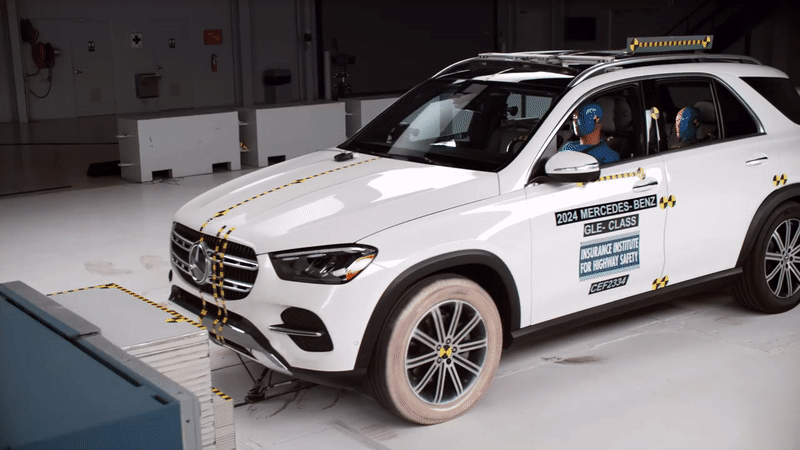The Volvo XC60 nails the IIHS’s new rear-seat passenger crash test, while the Cadillac XT6 fails it
{{comments}} comments
4 hours ago
The results are in for the latest round of the Insurance Institute for Highway Driving’s (IIHS) updated crash testing, and just three luxury midsize SUVs offered good protection for rear seat passengers: the Lincoln Aviator, the Mercedes GLE-Class, and the Volvo XC60.
The independent safety organization recently announced that it would be measuring crash test performance for rear seat occupants, in addition to that of front seat passengers. The IIHS reasoned that because of years of focus on driver safety, advancements in crash protection for those in the back have lagged behind.
It has slowly released the results of its crash tests in multiple segments and, indeed, most vehicles that formerly aced their crash tests, now struggle due to their relative lack of protection for people in the back seat. Indeed, with five out of the eight vehicles in the luxury SUV segment earning an acceptable or better rating, it is one of the best-performing segments in the industry.
advertisement scroll to continue
Read: Large Crew Cab Pickups Fail To Protect Rear Passengers In Crash Tests
“It’s encouraging that more than half of the 2024 midsize luxury SUVs we tested performed well in our updated moderate overlap front crash test,” IIHS President David Harkey said. “The three good ratings in this group show that our new, tougher standards are achievable when manufacturers commit to excellence.”
Although three vehicles earned a “Good” rating in the test (the highest one possible), just the XC60 aced it, earning top marks in every category of both front and rear passenger protection. Meanwhile, passengers in the back of the Mercedes GLE-Class were at an elevated risk of neck injury, while the dummy in the Lincoln Aviator came closer to the front seat than is optimal. However, overall, the trio all received a “Good” score.
Just acceptable ratings
Moving down the list, the Acura MDX and the BMW X3 both earned “Acceptable” ratings in the test. The IIHS reports that the injury measurements for both vehicles were within acceptable limits, but the MDX’s passenger slid down beneath the lap belt, while the X3’s dummy came close to the front seat.
The Audi Q5 and Lexus RX both barely scraped by with a “Marginal” rating. Submarining, in which the passenger slides under the lap belt, was a problem for both vehicles, as was the risk of head and neck injuries.
Finally, the Cadillac XT6 was the worst-performing vehicle in the bunch. It earned a “Poor” rating overall, because the dummy submarined beneath the belt, and showed moderate risk of head and neck injuries, and a high risk of chest injuries.
“Though several vehicles in this class performed extremely well, the fact that we saw submarining in half the models we tested shows that many manufacturers still have work to do to improve restraint systems in the second row,” Harkey said.
Credit: Source link
